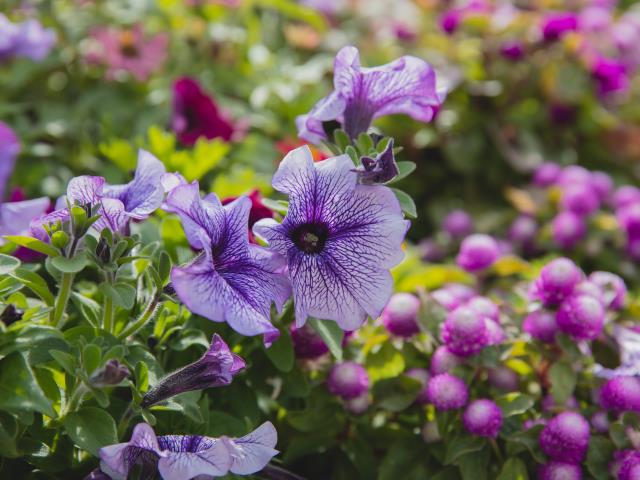By Beatrice Hawkins
With all the wonderful rain we’ve had, a moderate flood in the river and Leslie dam at almost 30% full, just maybe we can think of having a colourful garden and green lawns in the spring. Wouldn’t that be wonderful?
With that thought I mind I have already planted some petunias for a colourful border and am going to plant some sweet peas. An elderly friend and great gardener, told me many years ago that I needed to put the seeds in on St Patrick’s Day and I dutifully followed that advice in all the areas in which I lived. That is until I came here and was told by an equally competent gardener…”No, no. no dear – that’s way too early! So long as they are in by Anzac day you will be right.” So, in a nod to both of them, I am going to split the difference and get them in sometime in the next week or 10 days.
Sweet peas in all their lovely colours and forms are a favourite spring delight, especially some of the old fashioned highly perfumed varieties. As with many plants that have been “perfected” over many years some of the newer varieties have been bread for size, colour and aesthetic appeal to the detriment of the perfume. Australian is known for producing lovely frilly blooms while Japan is more about size and England loves perfume.
I find this also applies to many varieties of roses. If I have to put up with being spiked by thorns when picking or pruning I feel the need to be compensated by a beautiful perfume!
Petunias planted last spring did not do so well but I am sure this was in a large part due to a lack of water given our continuing water restrictions. I have also found that, in my largely frost free area, those planted in autumn give a much better display come spring.
I found some interesting facts, some of which I was unaware, about petunias, so here we go for the trivia buffs!
1. Petunias originate in Argentina. This country is one of the world’s largest producers of tobacco.
2. They are part of the Solanacae family that is closely related to Nicotiana, of which tobacco is a member.
3. Petunias need as much sun as the sky can provide.
4. This is contrary to the common name for the Solanacea family that is known as “nightshade”!
5. Petunias will bloom all year round given fertiliser and careful watering.
6. To keep them blooming they should also be regularly dead headed.
7. There are 35 known species of petunias and more than 400 cultivars.
8. There is also now a selection of perennial petunias that are remarkably easy to grow, form a nice rounded mound and will last a few years with minimal care.
9. One of the lesser known and uncommon varieties, petunia violacea, is a powerful hallucinogen and smoked by people in Ecuador!
I looked up what as to what was the best fertilizer to use and most commercial producers claim to be the best! So really any complete fertilizer that is not high in nitrogen should work well. Too much nitrogen will promote foliage to the detriment of flowers. Coffee grounds got a mention as being beneficial.
Sweet peas come from Sicily, southern Italy and the Aegean islands and while I might have been told St. Patrick’s Day was the optimum time to plant it seems that the further north you go the later the planting date becomes as the soil needs to be chilled for germination.
A Sicilian monk is said to have sent the first seeds to England in the 17th century and they became very popular in Victorian times.
The pods on sweet peas are inedible and actually poisonous so to save children being tempted you need to keep them removed. Alternately don’t let them develop. Just keep cutting the flowers to put in the house and enjoy or give away and they will keep blooming and not setting seed! A win-win situation!
A bouquet of sweet peas symbolise bliss and pleasure and so are great way to say thank you for an enjoyable encounter.
As the idea for flowers to represent a particular month all originate in the northern hemisphere, April, the northern spring, is the month for sweet peas.
Finally, as they are a legume, they will help improve your soil by adding nitrogen ready for the next crop.
I also intend putting some eating peas in the back garden. As is usual with me I am going to find some seed for the purple flowering, purple pod varieties as well as the more common ones. For the same reason I will put rainbow chard in as well as the common green varieties of silver beet. Purple carrots and stripy beetroot always also. Bright lime green or deep purple cauliflowers as well as regular broccoli and white cauliflowers.
The lovely rain had certainly brought an increase in interest in the garden but I must not get too carried away as we will still have water restrictions for some time yet.
What a delight it is to see green lawns and to hear lawnmowers going again! My lawn is growing well and keeping me exercised keeping it cut!
*This is an old article that has been digitised so our readers have access to our full catalogue.







